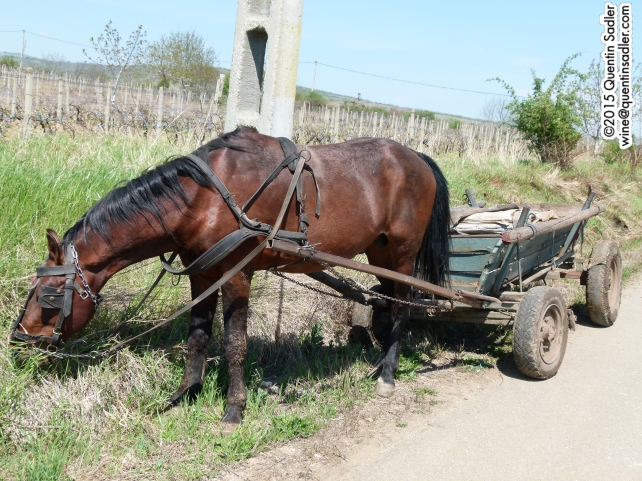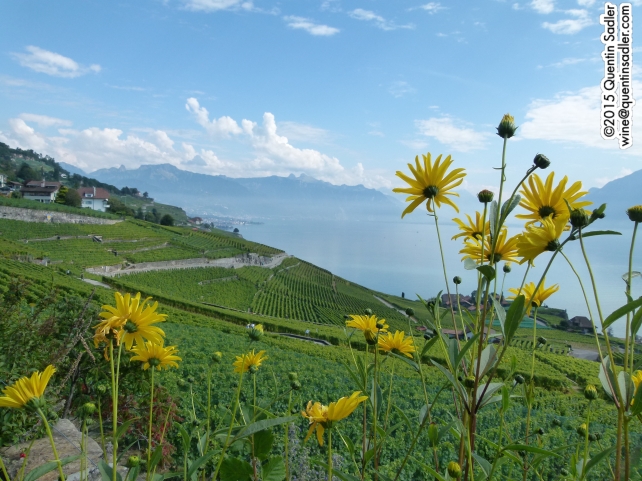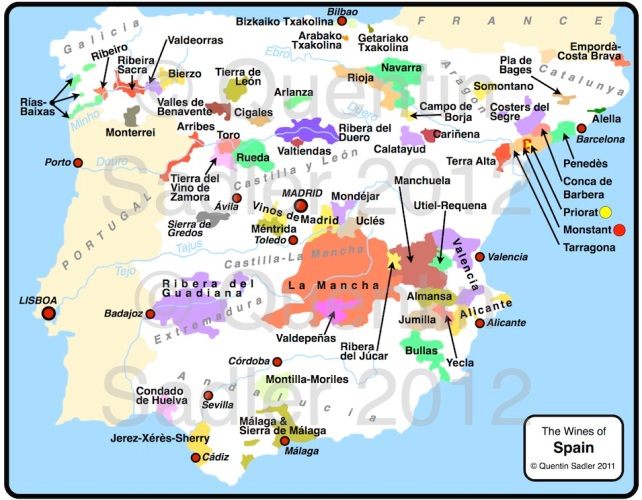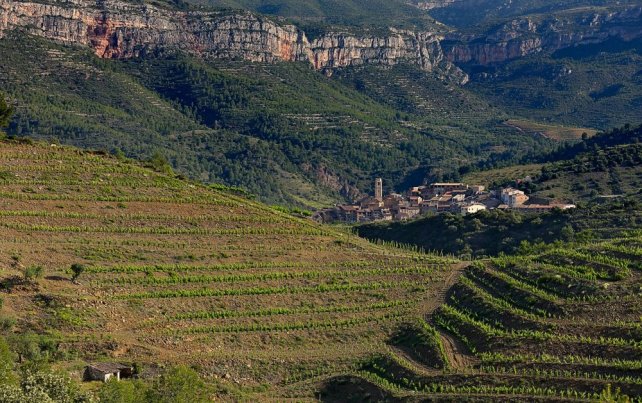I like sparkling wine. Yes I really like Champagne too, but sparkling wine does not just have to be for when you cannot afford Champagne you know – many are superb in their own right.
Recently I have tried a couple of delicious Cavas that really got me thinking – why is that in the UK so many consumers fail to see the beauty of Cava and regard it purely as a cheap alternative to Champagne? The Cavas that I tasted were both very different, made in different parts of Spain, from different grape varieties, but had one thing in common – quality. They were both really good and would please any wine drinker who was prepared to be open minded and to enjoy the wines on their merits.
Cava counts as a wine region, because it is a Denominación de origen / DO – or PDO in the overarching EU parlance. The great majority of Cava is produced in Catalonia, the DO covers great swathes of the autonomous region, but Cava can be made in parts of Rioja, Valencia, Navarra, Aragón and Extremadura as well.

My wine map of Cataluña. I created this for the new Wine Scholar Guild Spanish Wine Course which will be launched next year.
The DO regulates where Cava can be produced. The style was created in 1872 in Penedès by the Raventos family who own Codorniu, one of the two giant Cava companies – the other being Frexinet.
The traditional white grapes are Xarello, Macabeo (aka Viura) and Parellada, but Malvasia and Chardonnay are also permitted. Black grapes are used too – either to make rosado / rosé Cava or white cava in a Blanc de Noirs style – so Garnacha, Monastrell, Pinot Noir and Trepat are also allowed.
Of course any Cava must be made sparkling by the Traditional Method, as used for Champagne. This process usually makes the most complex sparkling wines.
Just like the wines of Rioja – and indeed most of Spain – not all Cavas are equal either. A Cava labelled simply as Cava must be aged on the lees for a minimum of 9 months. Cava Reserva is aged for at least 15 months, while Cava Gran Reserva spends a minimum of 30 months on the lees. Basically the longer the wine is aged on the lees, or yeast sediment left over from the second fermentation, then the more the wine develops those complex, savoury, bread, flakey pastry and brioche characters. Of course, as in Champagne, the best producers often age their wines for much longer than the legal minimum time.
There is also a new top-tier category of single estate Cavas, called Cava de Paraje Calificado.
Sadly only one of the Cavas that I tasted is readily available so I will limit myself to that one for now – luckily it is really, really good…
 2011 Roger Goulart Brut Gran Reserva
2011 Roger Goulart Brut Gran Reserva
DO / PDO Cava
Cavas Roger Goulart
Sant Esteve Sesrovires
Alt Penedès, Cataluña
Spain
Based in Sant Esteve Sesrovires, which is near Sant Sadurní d’Anoia, Roger Goulart was founded in 1882 by Magí Canals. He bought the land from the Goulart family, just ten years after Cava was invented. The winery now farms 20 hectares of vines and boasts a kilometre of deep tunnels and cellars where the wines are aged. Above ground is a stunning winery designed by Ignasi Mas i Morell who was a contemporary of the great Catalan architect Antonio Gaudí.
Everything here is done by hand with an eye to detail. This wine is a blend of the three classic Cava grape varieties 60% Xarello, 20.0% Macabeo (Viura) and 20% Parellada, although they do also have Chardonnay and Pinot Noir. The grapes are hand harvested in the very early morning to ensure the grapes are in perfect condition and the acidity, so crucial for sparkling wine, is retained.
In order to create a richer, more autolytic style, they shake the bottles during the ageing period in order to increase lees contact with the wine and so develop a deeper flavour – a little like bâtonnage in still wines. Goulart aim for complex wines and so age their Gran Reservas on the lees for five years before release.
If you have never tasted a fine Cava then this might be the place to start. It absolutely wowed me because it has that softer fruit profile that Cava has, making it very different from Champagne. There is also lovely brisk acidity keeping it refreshing and delicate, which balances the fruit. Then there is the richness, smoky, nutty, brioche and a touch of flakey pastry from the lees ageing – again this is balanced by the acidity and itself balances the fruit. They wine is very dry, but with a touch of fruit softness, while the mousse is very delicate with a firmness to it that makes the wine feel very elegant and fine.
This is a great sparkling wine and is very versatile. Don’t just save it for celebrations or as an aperitif. It is fabulous with fish and chips, Asian food and light dishes – 92/100 points.
Available in the UK at around £20 per bottle from The Bottleneck, Bin Two, Dulwich Vintners, Vino Wines, Ellie’s Cellar, Luvians Bottleshop, Wholefoods Camden, Islington Wine, Chislehurst Wines, The Leamington Wine Company, Roberts & Speight, Shearer’s Fine Foods, The Shenfield Wine Company






































